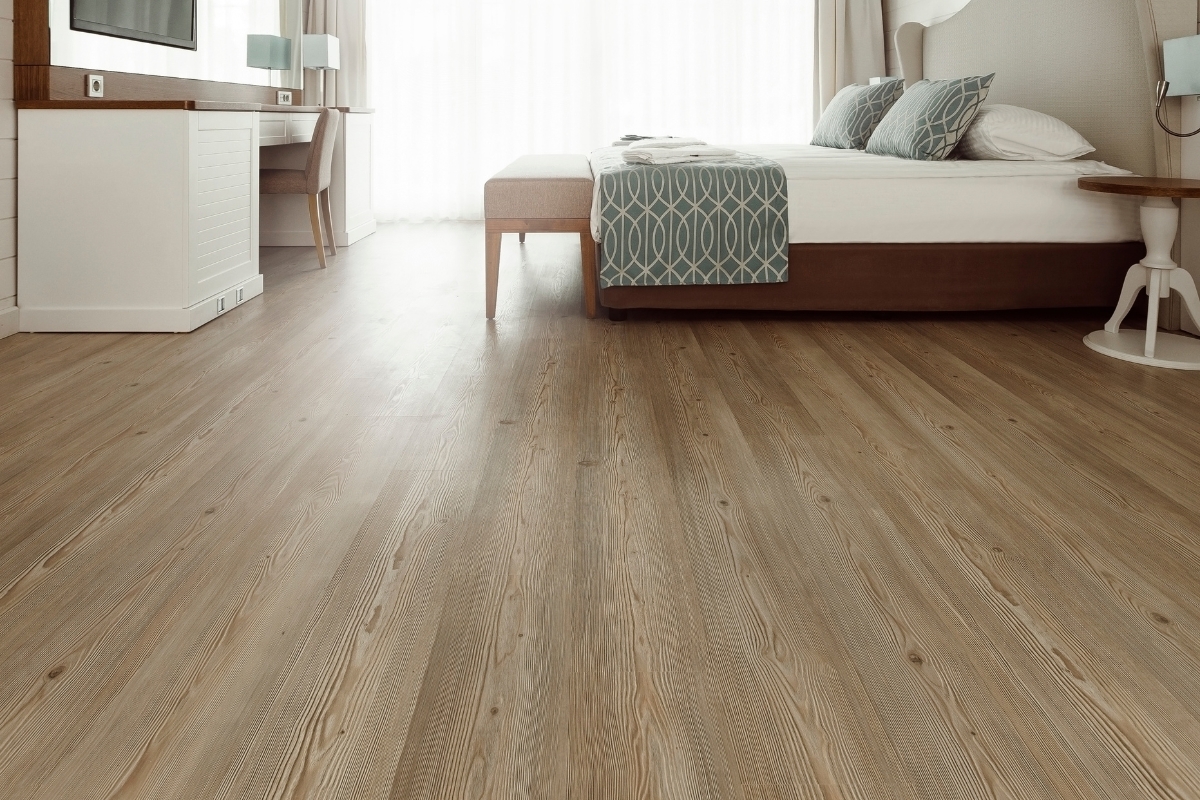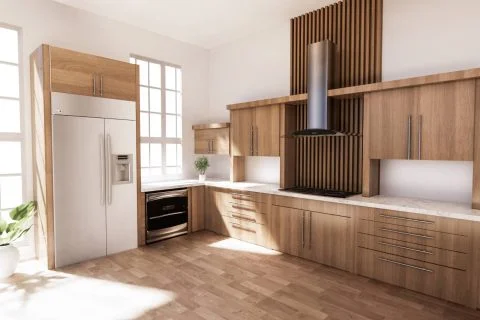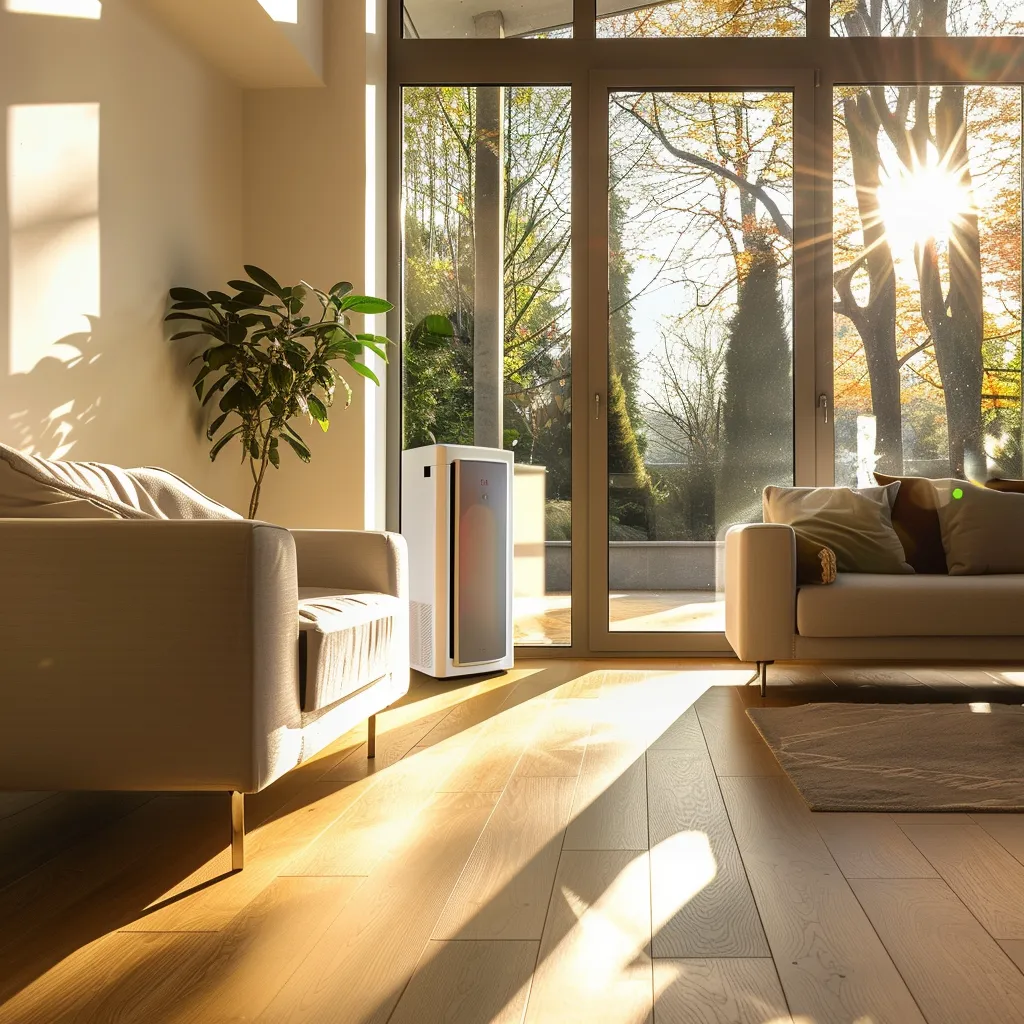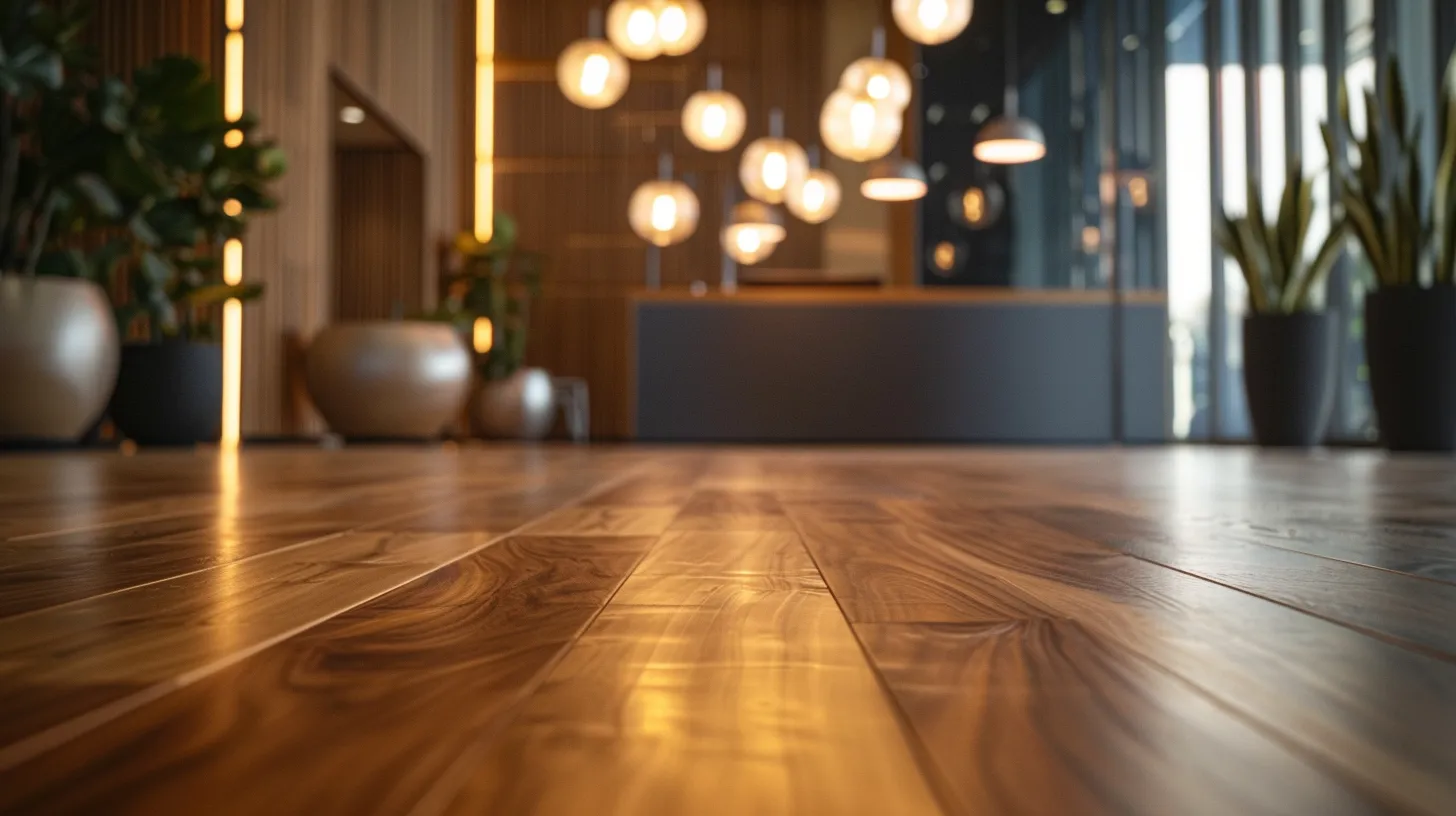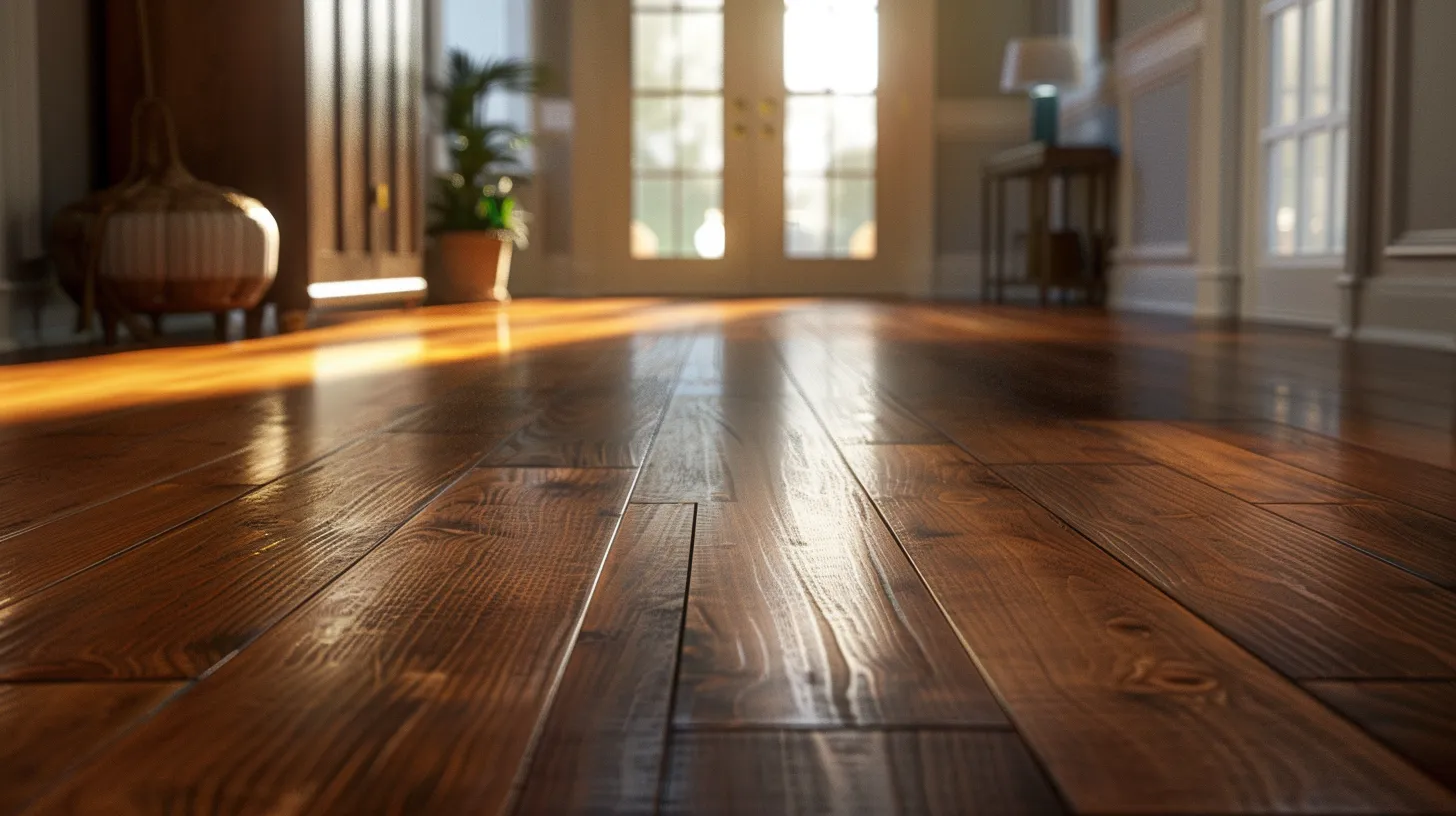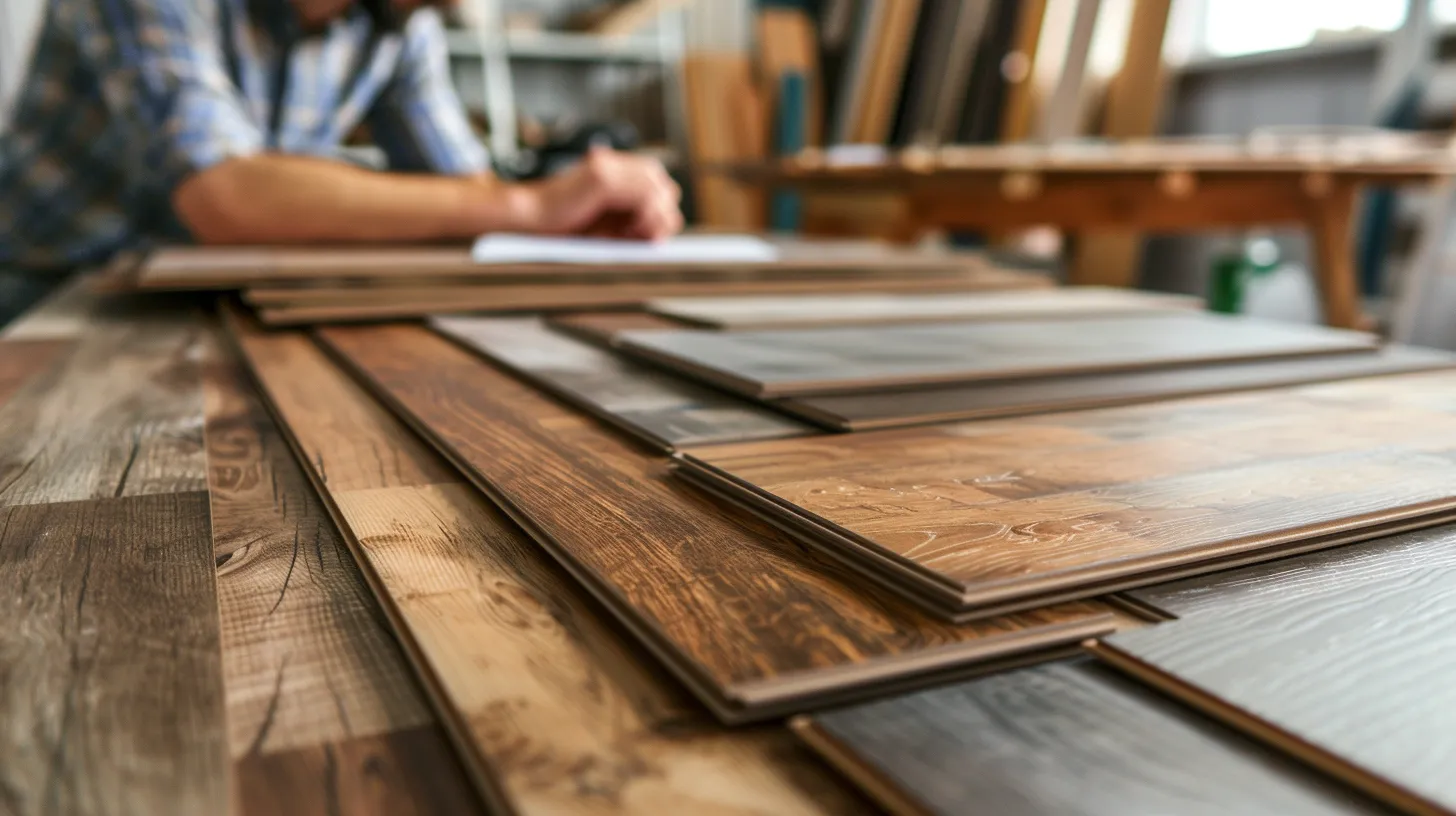Are you tired of constantly replacing your worn-out flooring? Look no further because we’re about to unveil wonders of engineered hardwood flooring. Engineered hardwood is a game-changer in the world of interior design, offering a stunning aesthetic while being far more durable than traditional solid wood floors.
In this comprehensive guide, we will delve deeper into the world of engineered hardwood flooring. We will explore the various styles, finishes, and installation methods available, as well as provide tips on proper maintenance and care. So, whether you’re renovating your home, simply considering a flooring upgrade, or looking to boost your home’s property value, get ready to discover the undeniable allure and long-lasting appeal of engineered hardwood.
Transform Your Space: Why Should You Consider Engineered Hardwood Flooring?
The Top Layer: Real Hardwood Veneer for Natural Beauty and Authenticity
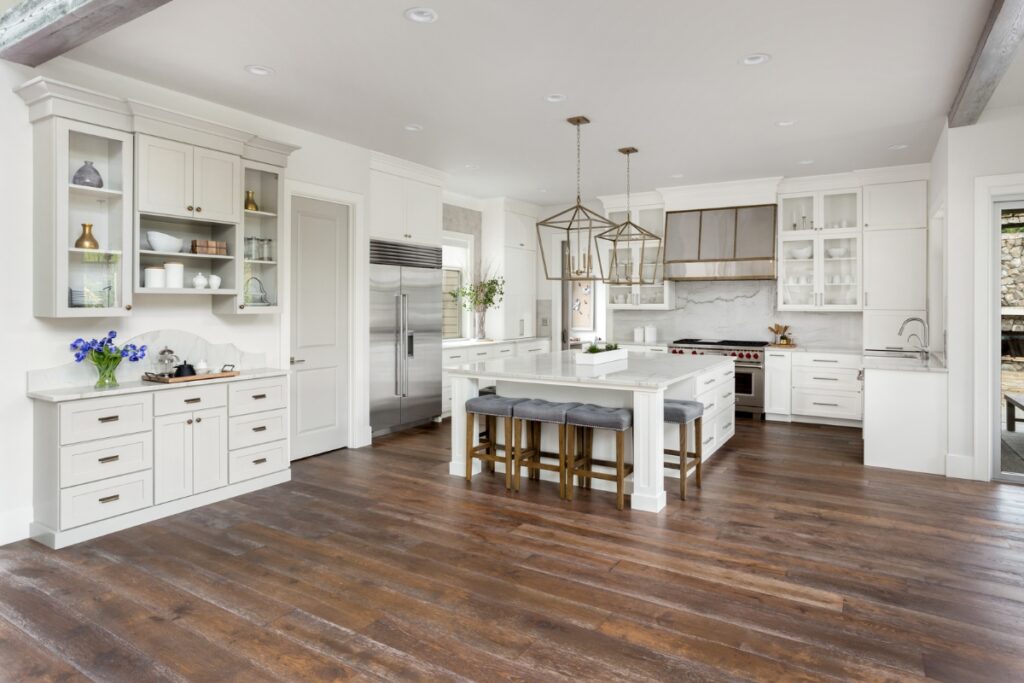
Real hardwood veneer is the top layer of engineered hardwood flooring, which provides natural beauty and authenticity to any space. Engineered hardwood flooring is a popular choice for homeowners who desire the look and feel of solid hardwood but with added durability and stability.
The top layer of engineered hardwood is made from a thin slice of real hardwood, typically ranging from 1mm to 6mm in thickness. This veneer is carefully selected for its grain patterns, color variations, and overall aesthetic appeal. With a real hardwood veneer, you can enjoy the rich, warm tones of oak, maple, walnut, cherry, and other popular hardwood species.
One of the main advantages of real hardwood veneer is its ability to mimic the appearance of solid hardwood flooring. The natural grain patterns and variations in color give the engineered hardwood a realistic and authentic look. Whether you prefer a rustic, distressed finish or a sleek, modern style, there is a real hardwood veneer that can complement your design preferences.
Building a Strong and Stable Core: The Layers Beneath the Veneer
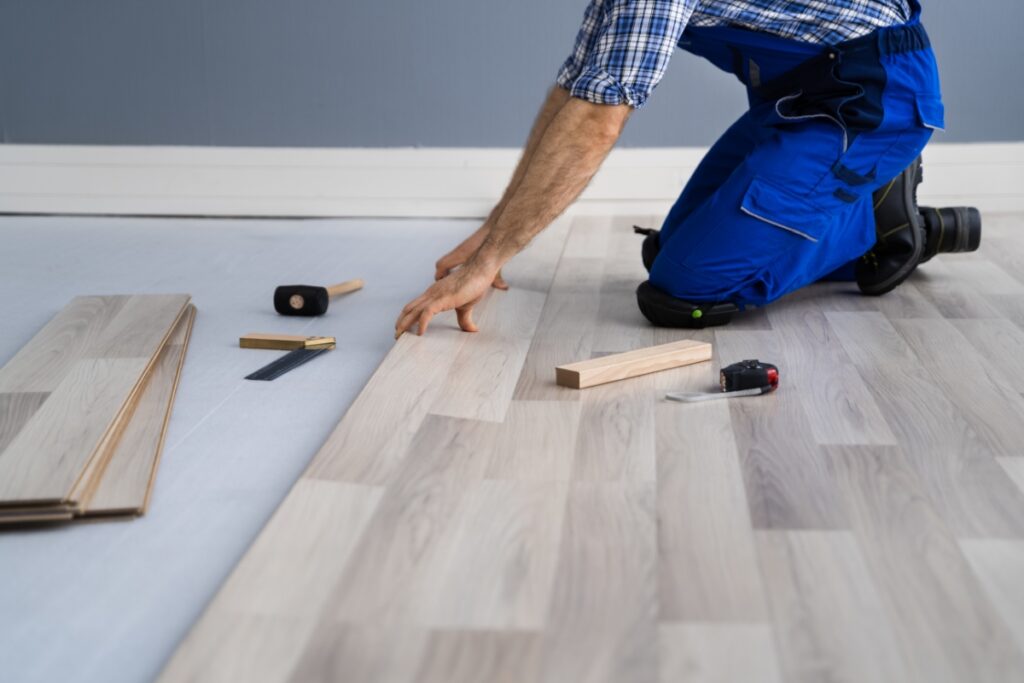
When it comes to flooring options, engineered hardwood has gained immense popularity in recent years. Its unique construction and durability make it a top choice for homeowners looking for a beautiful and long-lasting flooring solution.
At first glance, engineered hardwood may seem similar to traditional hardwood flooring. However, its construction is quite different. Unlike solid hardwood, which is made from a single piece of wood, engineered hardwood consists of multiple layers that are carefully designed to enhance its stability and strength.
The top layer, or veneer, is what gives engineered hardwood its natural and authentic look. It is typically made from a thin slice of real hardwood, allowing you to enjoy the beauty of various wood species such as oak, maple, or walnut. The high-quality veneer provides the flooring with its unique grain patterns and rich color variations, making it indistinguishable from solid hardwood.
Beneath the veneer lies the core layer, which is the heart of engineered hardwood. This layer is typically made from cross-layered plywood or high-density fiberboard (HDF). The cross-layered construction adds stability to the flooring, preventing it from warping or expanding due to changes in temperature and humidity. The use of HDF can further enhance the durability of the flooring, making it resistant to dents, scratches, and other wear and tear.
Ideal for Any Room: Engineered Hardwood’s Resistance to Moisture and Temperature Changes
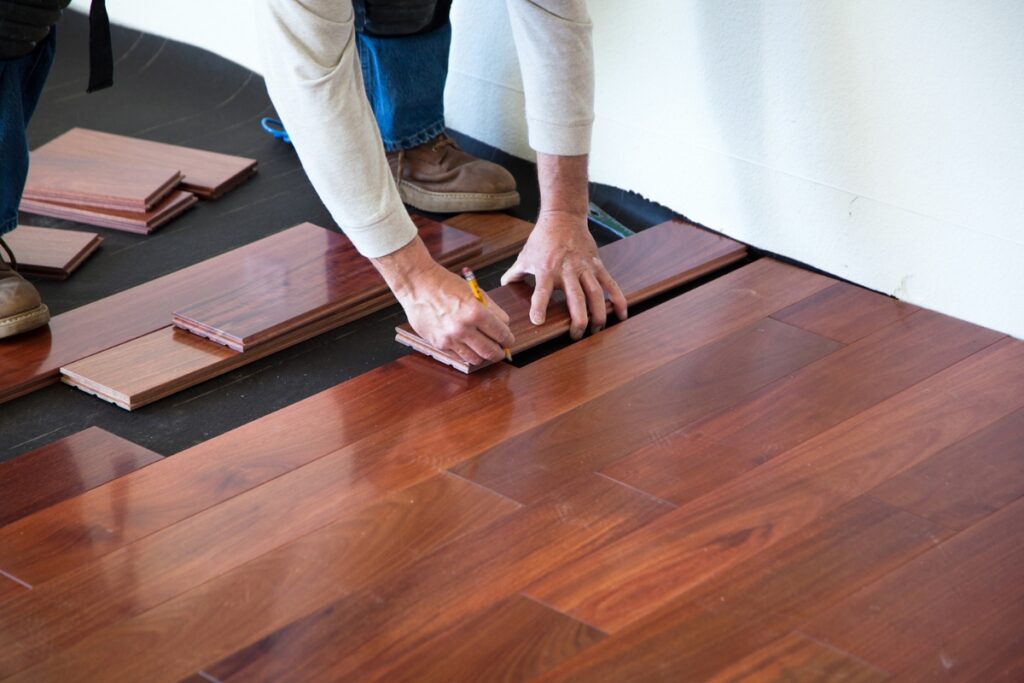
Engineered hardwood flooring is a versatile and practical choice for any room in your home. Its unique construction makes it highly resistant to moisture and temperature changes, making it suitable for areas that are prone to such conditions. Whether you are considering installing engineered hardwood in your kitchen, bathroom, or basement, you can rest assured that it will hold up well over time.
One of the key advantages of engineered hardwood is its ability to resist moisture. Unlike solid hardwood, which can warp and buckle in humid environments, engineered hardwood is designed to withstand these conditions. Its layered construction, with a top layer of real wood and a core made of high-density fiberboard or plywood, provides stability and prevents moisture from seeping through the surface. This means that even in rooms with high humidity levels, such as bathrooms or laundry rooms, engineered hardwood flooring will remain unaffected.
In addition to moisture resistance, engineered hardwood also performs well in areas with fluctuating temperatures. It is more dimensionally stable than solid hardwood, meaning it is less likely to expand or contract when exposed to temperature changes. This makes it an excellent choice for rooms with underfloor heating or areas that experience extreme temperature variations, such as sunrooms or conservatories.
Say Goodbye to Wear and Tear: Enhanced Scratch and Dent Resistance
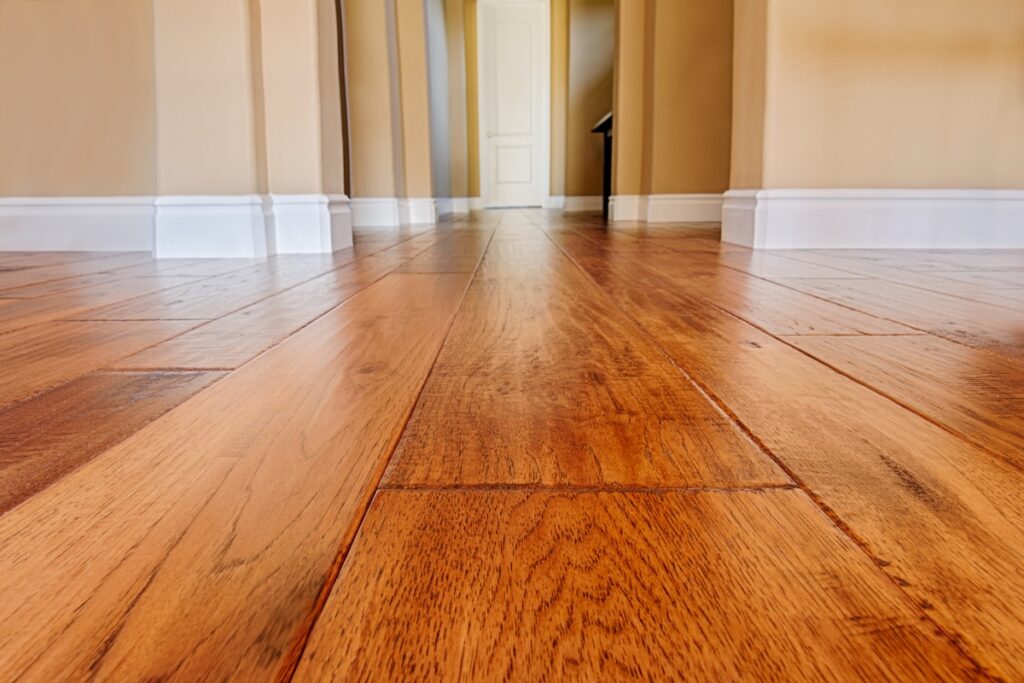
When it comes to flooring options, engineered hardwood has gained immense popularity in recent years. Combining the timeless beauty of wood with durability and practicality, it has become a preferred choice for homeowners and interior designers alike. One of the key reasons behind its growing demand is its enhanced scratch and dent resistance, which ensures that your flooring retains its beauty for years to come.
Engineered hardwood flooring is designed to withstand the daily wear and tear that comes with a busy household. Unlike solid hardwood, which is prone to scratches and dents, engineered hardwood is constructed using multiple layers of wood. The top layer, known as the wear layer, is made from high-quality hardwood that provides the flooring with its natural beauty. This wear layer is specially treated to enhance its scratch and dent resistance, making it highly durable and long-lasting.
With enhanced scratch and dent resistance, engineered hardwood flooring can handle the rigors of daily life without losing its pristine appearance. Whether you have kids running around, pets playing, or heavy furniture being moved, you can rest assured that your flooring will maintain its charm. This is particularly beneficial in high-traffic areas such as the living room, kitchen, or hallways, where scratches and dents are more likely to occur.
In addition to its practicality, engineered hardwood flooring offers a wide range of design options. From classic oak and maple to exotic species like Brazilian cherry and acacia, you can choose from a variety of wood types, colors, and finishes to suit your personal style and home decor. The enhanced scratch and dent resistance ensures that your chosen design remains intact, allowing you to enjoy the beauty of your flooring for years to come.
Maintaining engineered hardwood flooring is also relatively easy. Regular sweeping and occasional mopping with a recommended cleaner will keep your floors looking their best. The scratch and dent resistance of the top layer minimize the need for extensive repairs or refinishing, saving you both time and money in the long run.
Exploring Styles and Finishes: Making Engineered Hardwood Your Own
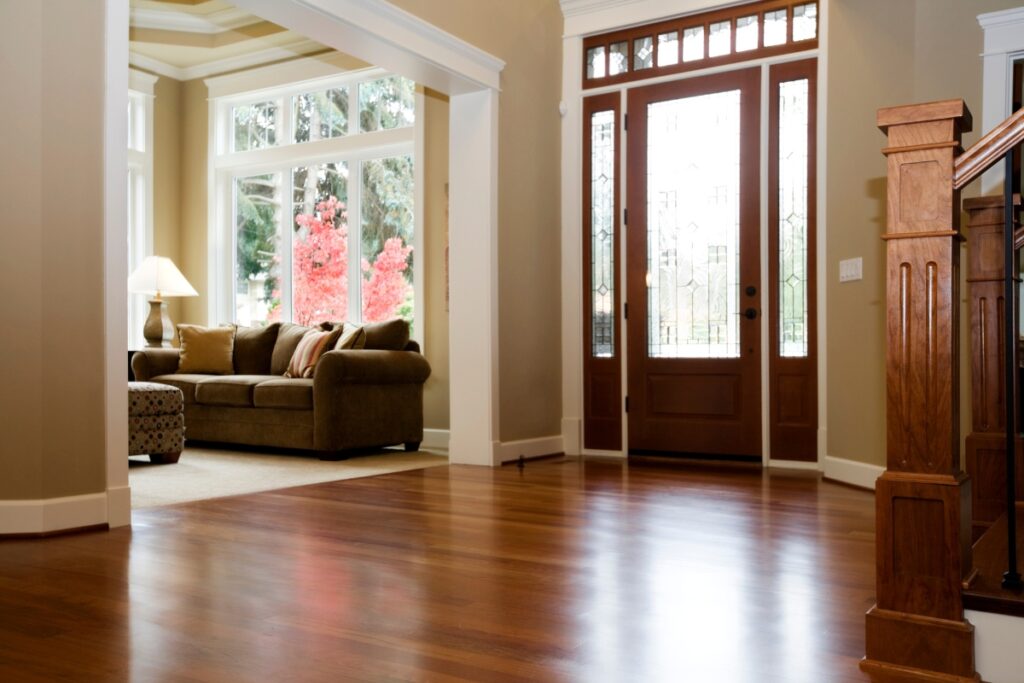
When it comes to flooring options, engineered hardwood is a popular choice for many homeowners. This type of flooring offers a beautiful and durable solution that can enhance the overall look and feel of any space. One of the advantages of engineered hardwood is the variety of styles and finishes available, allowing you to truly make it your own.
Whether you prefer a classic or modern aesthetic, engineered hardwood can be customized to suit your personal style. From light to dark tones, there are numerous color options to choose from. The natural grain patterns add depth and character to the flooring, enhancing its visual appeal.
In addition to color, the finish of engineered hardwood plays a crucial role in its overall look. There are several finishes to consider, including matte, satin, and high-gloss. Each finish offers a distinct aesthetic, allowing you to create the desired ambiance in your space.
For those who appreciate a rustic or vintage look, distressed finishes are available. These finishes give the flooring a weathered appearance, adding a touch of character and charm. On the other hand, smooth finishes provide a sleek and polished look, perfect for contemporary and minimalist designs.
Longevity and Beauty: Proper Maintenance and Care for Engineered Hardwood Flooring
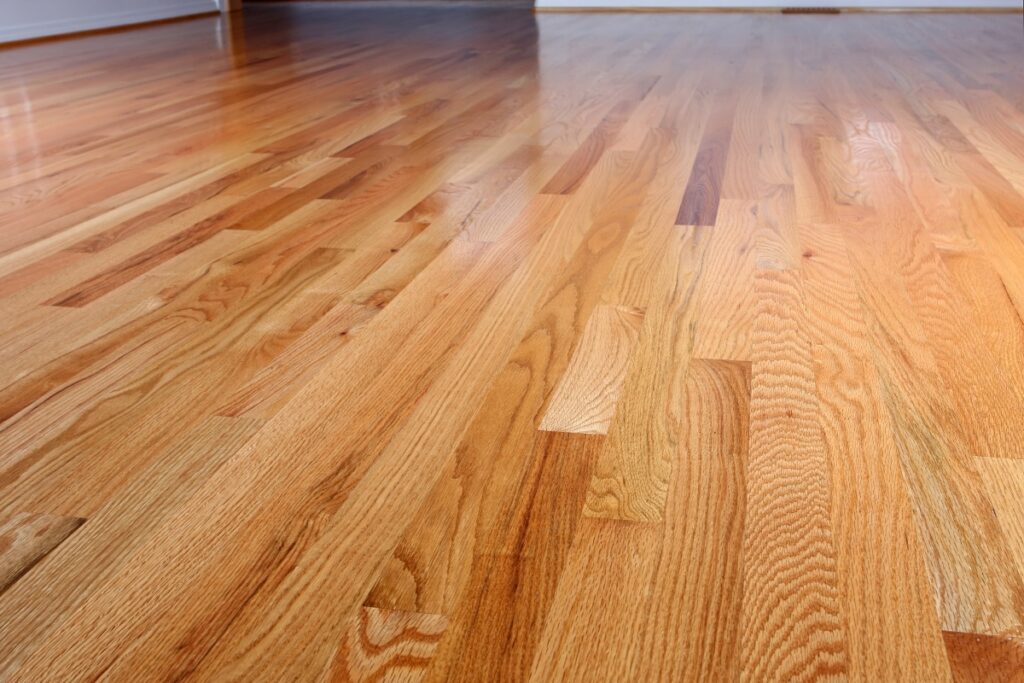
When it comes to longevity and beauty, proper maintenance and care for engineered hardwood flooring is crucial. Engineered hardwood flooring is a popular choice for homeowners due to its durability and aesthetic appeal. By following a few simple maintenance tips, you can keep your engineered hardwood floors looking pristine for years to come.
One key aspect of maintaining engineered hardwood flooring is regular cleaning. Start by sweeping or vacuuming the floors to remove any dirt or debris that may scratch the surface. Be sure to use a soft-bristle broom or a vacuum cleaner with a hardwood floor attachment to prevent any damage.
For deeper cleaning, damp mop the floors using a floor cleaner that the manufacture recommends. Avoid using excessive water, as moisture can seep into the seams and cause the wood to warp or buckle. Instead, lightly mist the floor cleaner onto a microfiber mop pad and gently clean the floors in small sections.
To prevent scratches and dents, it’s important to protect your engineered hardwood floors from furniture and heavy objects. Take preventative measures like placing felt padding or furniture glides under the legs of furniture pieces to create a cushioned barrier and prevent scratches. When moving heavy furniture, use furniture sliders to avoid dragging or scraping the floors.
Another consideration for maintaining engineered hardwood flooring is moisture control. Unlike solid hardwood, engineered hardwood is more resistant to moisture, but it is still susceptible to damage if exposed to excessive water. Wipe up any spills immediately to prevent them from seeping into the wood. Use rugs or mats in high-moisture areas such as entryways, kitchens, and bathrooms to catch any water or dirt before it reaches the floor.
In addition to regular cleaning and protection, it’s important to follow the manufacturer’s guidelines for maintenance and care. Each engineered hardwood flooring product may have specific recommendations for cleaning agents, refinishing, and maintenance procedures. By following these guidelines, you can ensure that your floors maintain their beauty and durability over time.
Conclusion: Engineered Hardwood Flooring As a Practical and Visually Appealing Option For Your Home
Engineered hardwood flooring is a popular choice for homeowners who want a practical and visually appealing option for their homes. This type of flooring combines the natural beauty of hardwood with the durability and versatility of engineered materials. Whether you’re renovating your home or building a new one, engineered hardwood flooring is worth considering.
Considering engineered hardwood flooring for your home? Choose Diaz Hardwood Flooring!
Our range of flooring installation and maintenance services ensures that your home’s floors look great and stay that way for a long time. Get a free quote from us through our website form, or give us a call at 404-791-0444, and let’s talk about elevating your home’s flooring today!

